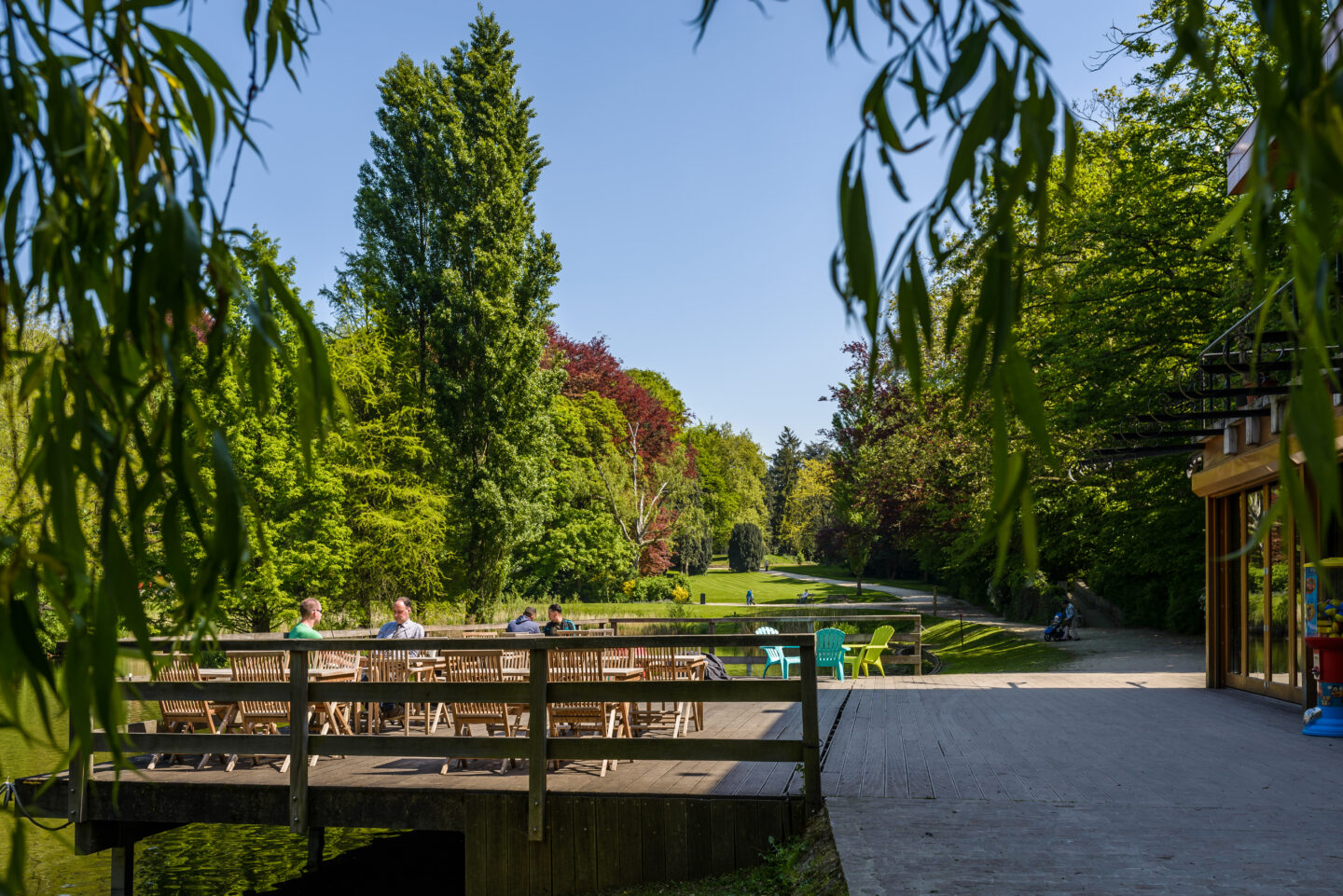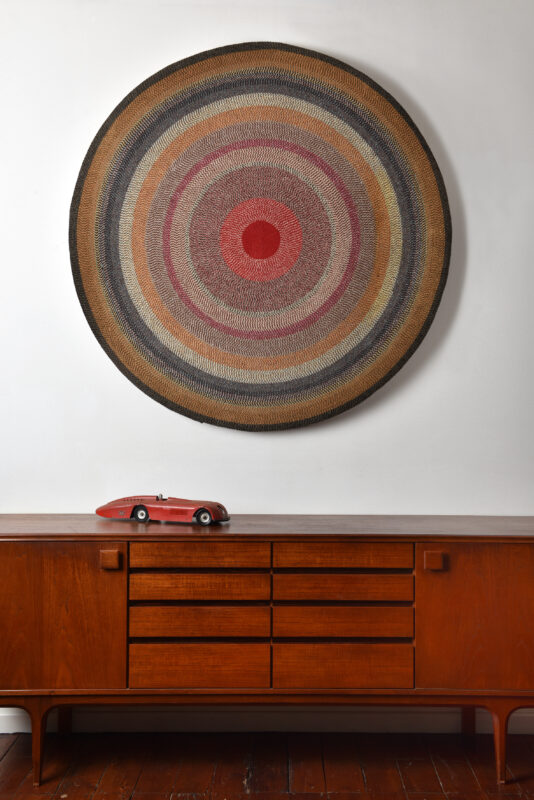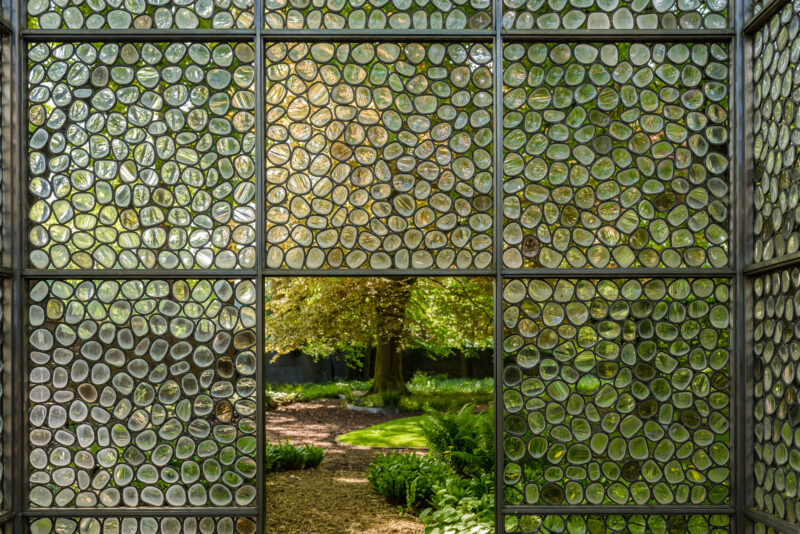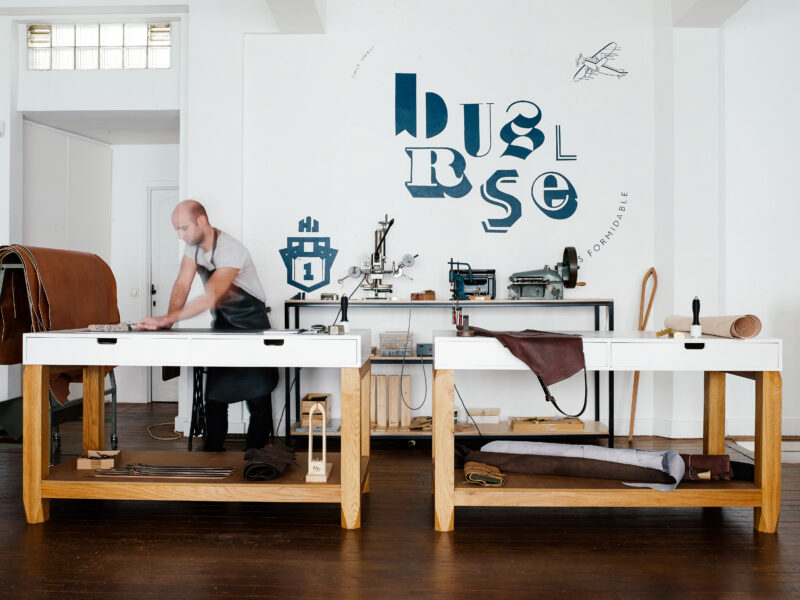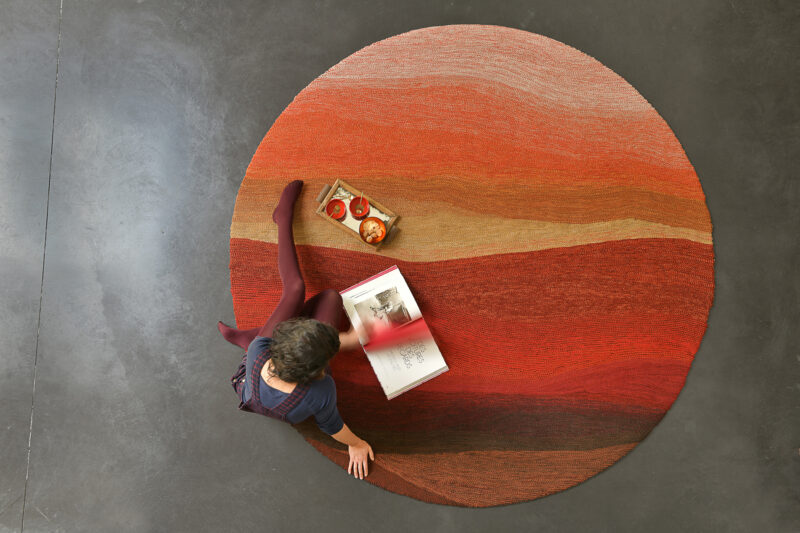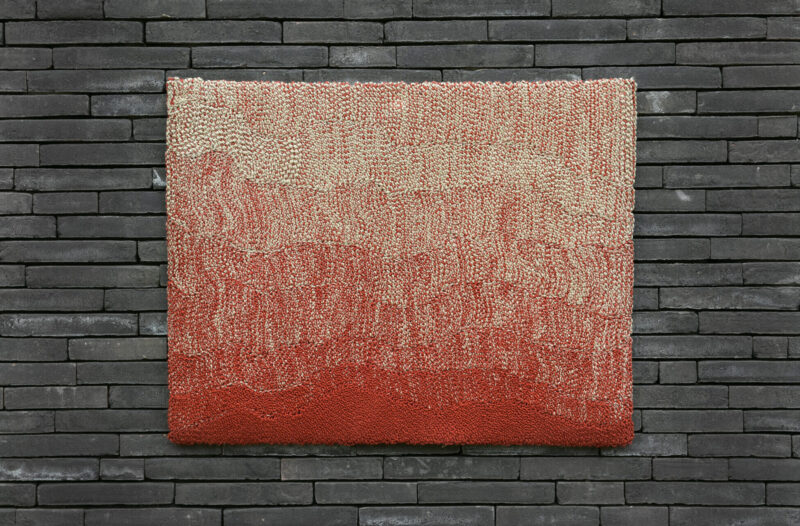At Niyona, traditional leathercraft disciplines – once separated into guilds like sheathing, saddlery, and gilding – are united under one roof. In their Brussels workshop, Jonathan Wieme and Nina Bodenhorst blend these classical techniques into a single, thoughtful practice. It’s here that centuries-old hand-stitching methods meet laser-cut inlays, and vegetable-tanned hides are sculpted into custom knife rolls for Michelin-star chefs or architectural panels for bespoke interiors.
What sets the duo apart is not only the precision of their craft, but their reverence for leather as a living, expressive material. Their curiosity drives them to combine unexpected finishes, like matte cowhide with polished brass, or to adapt saddle-making techniques to fit the curve of a sculptural handbag. The result is work that feels both timeless and tailored: each piece is a conversation between old-world technique and contemporary function.
© Courtesy of the artist
Which place do you currently call home and where do you work on your projects?
I live with my family in Anderlecht, one of the 19 municipalities of the Brussels-Capital Region, located in the southwestern part of the city. Our workshop is on the ground floor of the same house where we live, a family home built by my grandfather in 1957. He moved from the countryside, where he worked as a farmer, to the city to open his grocery store. Though we’ve done some renovations over time, you can still see and feel its past as an old shop and workshop. It’s a great feeling to continue our own professional path in the same house where my grandparents, and later my parents, worked.
Geographically, our location has a lot of advantages. We are literally “on the hills,” enjoying an open view, and only 3 km from the Brussels city center – just a short distance from the famous Grand Place. At the same time, we’re only 2 km from the farmlands and an equal distance in the other direction from Brussels South train station. It’s the perfect balance for all kinds of connections.
Do you have a favorite place in your area where you like to relax and linger?
We’re surrounded by parks – small ones, big ones, some with water spots, playgrounds – each with its own style and vegetation. Astrid Park is just a stone’s throw from our workshop. It’s a magnificent place with a variety of trees, plants, a small lake, and even waterfalls. It also hosts the stadium of R.S.C. Anderlecht, the most awarded football club in the country.
A little further, you have the regional park of Pede in the Neerpede neighborhood, which connects to other parks and marks the frontier of the Pajottenland farmlands. These two places are the perfect escape for a short or long walk. If you head down the street, you reach the historical center of Anderlecht, home to a church, a music academy, an arts academy, and other historical sites. Right next to them, there’s a cozy coffee spot called La Fourmillère – perfect for a more “cultural” break.
© Visit Brussels
Are there any urgent political issues or problems in your region?
Like many capitals and big cities, our main concerns are safety, poverty, and cleanliness – in that order. Over the last few years, things have worsened somewhat due to a lack of political action and decision-making, not just locally but mainly on a national level. However, we seem to be at a turning point. People want to take initiative and bring concrete plans and ideas to life. Hopefully, the best is yet to come.
In your opinion, what has developed well in the last five years—and what has not?
There’s been a strong push to make Brussels more pedestrian- and cyclist-friendly, sometimes at the expense of car drivers. The transition and implementation weren’t always handled well, but in the end, it’s the right direction. In an ideal world, we’ll all enjoy our city centers more with better connections. I use all kinds of transportation – bike, motorbike, public transport, walking – and even though driving a car has become a pain, I enjoy the slower, more intentional movement of walking or taking public transport.
On a different note, the food scene in Brussels has exploded with new restaurants, bars, and coffee spots. We’re spoiled here. However, Anderlecht is lagging behind, missing some nice, high-quality food and drink spots. Hopefully, it’s just a matter of time before that changes too.
Do you know a hidden gem when it comes to local manufacturers—whether it’s arts and crafts, sustainable products, or food?
Brussels has an incredible density of high-quality bakeries and specialty coffee shops – some of the best I’ve seen in any city. Unfortunately, Anderlecht is lacking (hint, hint…), but we’re close enough to everything we need. My favorite bakeries are Aube (in Forest) and Khobz (in Ixelles), and for coffee, MOK (in the Dansaert area) is the best. But taste is personal – I could easily list 10 or 20 amazing spots. Try Bouche near Parc Royal, Stella Coffee, Mon Boulengier in St. Gilles, or Belga & Co for an excellent coffee. Brussels is a paradise for bakeries and coffee, still driven by independent entrepreneurs and artisans.
In terms of craftsmanship, there are some real hidden gems worth checking out: Maison Van Thienen (frame builder), Laure Kasier (bespoke rug artisan), Eveline (vintage and collectible watches in Sablon), and my good friend Lunetier Ludovic (bespoke eyewear artisan, also in Sablon). Again, I could easily recommend 10-20 places – Brussels is a hub for fine craftsmanship, but you have to know where to look.
© Serge Brison
Is there anything particularly innovative in your region?
Brussels isn’t known for daily-life innovation – things take time here, mostly due to political complexity and slow-moving big companies. One exception is public transport, which isn’t bad compared to other cities.
That said, people make the difference here. There’s a strong presence of small entrepreneurs in creative fields. If you’re looking for innovation or avant-gardism, I’d point to our cultural scene. It’s often undervalued by politics, but in design, craftsmanship, art, music, and fashion, we’re at the forefront. It’s not always obvious, but once you start exploring, you’ll feel it.
Do you have a secret restaurant tip?
A secret is a secret, right?
But okay – one that makes me feel like I’m in Lisbon is Nightshop on Rue de Flandres. Small plates, open space, no hotspot location, but just perfect.
Another one that many from my generation hesitate to try is Bozar Restaurant, run by chef Karen Torosyan. It’s traditional French cuisine at its finest – pure craftsmanship. Set some money aside and go; it’s a before-and-after experience in your culinary journey.
Closer to our workshop is La Paix by David Martin, one of the best restaurants in Belgium. His Japanese influences and innovative cooking style are amazing. But for a real hidden gem in Anderlecht, check out La Ferme du Chaudron and its restaurant Les Gastrosophes in Neerpede. It’s not fancy, but they use very local products in a great atmosphere. Perfect for a lunch or dinner paired with a walk around the lakes.
Is there a local shop whose products are only available in your region?
I could mention the local manufacturers I talked about earlier – they all create or sell unique products you won’t find elsewhere. But if we’re talking about shopping in general, you should check out Rue de Namur. I’ve always loved this small, intimate street that connects two different areas and styles near the city center of Brussels. And if I had to pick just one shop there, I’d go with Handshake, a running store that gets everything right. Running culture is booming everywhere, and this place nails it with a great interior, a solid selection of brands, and its own in-house designs. On top of that, it actively builds a local running community, which makes it even better.
What are your three favorite apps that you use every day and couldn’t live without?
I’d like to think I can live without any app, but if I had to choose, my top three would be Instagram, Spotify, and Strava. Inspiration and photography, music, and sports – that’s all I need. That said, ChatGPT is becoming more present in my daily digital routine. I mostly use it to bounce ideas around, dig into topics I’m curious about, or challenge my own thoughts. Everyone talks about AI, and my take is: if you can’t fight it, embrace it – but do it your way. The future isn’t AI itself, but the people who know how to use it creatively. It’s like the electric guitar. It only got interesting when Jimi Hendrix started playing it his way, breaking conventions and pushing boundaries.
Do you have any favorite newspapers or online magazines? How do you keep up with politics, social, and cultural issues?
I love print magazines. They’ve become an exciting medium, with independent publishers pushing creative layouts, fresh concepts, and high-quality content. Writing meaningful content is the hardest part, but I’m drawn to the whole package – the design, the visuals, the storytelling. I don’t focus much on politics when I read; there’s already enough of that on social media and in the news. Instead, I go for magazines about automotive culture, architecture, design, pop culture, and lifestyle. Racewknd is a great one for motorsport culture, The Road Rat does deep dives into car culture, and AD and Wallpaper are classics for staying on top of design trends. I even created my own magazine, Motorcycle Cities, where I document the intersection of motorcycle culture and urban environments. I’ve published three issues so far – it’s part journalism, part photography, part personal exploration.
Beyond print, I love platforms that offer a full experience, blending online stories, physical spaces, events, Instagram posts, and book releases into a single universe. Type 7, powered by ERG Media, is a great example of that.
When I go online, I’m mostly into podcasts, both audio and video. I love long-format discussions where guests go deep into a subject. My interests shift depending on the moment, but I typically bounce between running and adventure stories on one side and entrepreneurship on the other. The Rich Roll Podcast is a solid one in English, covering endurance sports, health, and personal growth. Génération Do It Yourself by Mathieu Stefani is another great one, in French, with a focus on entrepreneurship and business insights. For sports, I like the ones by Friends of Sports, in Flemish. But honestly, I often end up lost in a random deep dive – like listening for hours to stories about modernist architects – depending on my mood.
Imagine you could be mayor for a year—what would you change?
Haha… it would be a mess. But my main focus would be getting kids off their screens by giving them better outdoor alternatives, especially kids from lower-income backgrounds. And no, bad weather isn’t an excuse to come inside.
For example, Brussels doesn’t even have a proper outdoor swimming pool. Most sports facilities focus on just a few sports, and you rarely see girls playing football or basketball in public spaces. Running crews and sports communities are growing in the city, brands are jumping on the trend, but no one is making it accessible to underprivileged teenagers. Why not organize weekly community runs for them?
I’d also push for more pedestrian-friendly and safer cycling zones, plant trees literally everywhere, and stop the destruction of green spaces for parking lots and supermarkets. There should be more activities for kids, both physical and creative, and a stronger connection between cultural institutions, museums, and schools. Music, art, craftsmanship – it should all be more accessible and easy to get into. And on top of that, public transport should be free.
I know it sounds idealistic, but real change happens when you dream big but act small, one step at a time.
© Jean Paul Remy
If you could choose another place to live—regardless of financial or time constraints—where would it be?
I’ve lived my whole life in Brussels, the heart of Europe, and it truly feels like a melting pot. It has plenty of benefits, but I’m not too curious to stay here forever. My dream locations would be somewhere in Portugal (an hour from Lisbon) or in the mountains on the Italy-Switzerland border – maybe northern Lombardia or Valle d’Aoste. I can’t decide between the two.
Portugal is one of the kindest, most authentic countries I know, with a perfect balance of city and nature. But the appeal of the mountains and outdoor activities is strong. I’d also love to explore South America and Southeast Asia to experience different ways of life and cultures. Western Europe often feels like the center of the world, but today’s political climate shows how fragile that is. We’ll see where I land – but for now, Anderlecht isn’t that bad after all.
© Geert De Taeye


